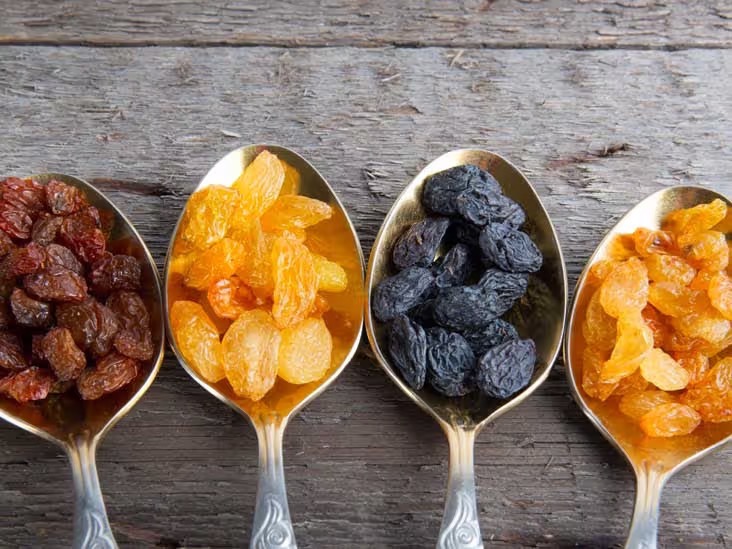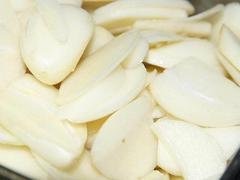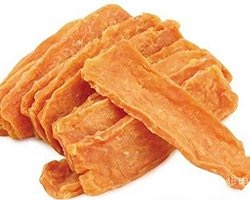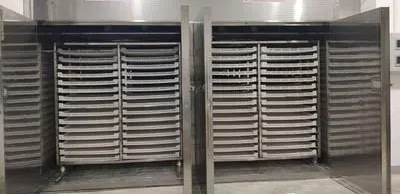
Content Menu
● Introduction
● What Is a Heat Pump Dryer?
● How Does a Heat Pump Dryer Work?
● Benefits of Using Heat Pump Dryers for Food Processing
>> Additional Benefits
● How Much Does a Heat Pump Dryer Cost?
>> Cost Breakdown Example
● Comparing Heat Pump Dryers to Conventional Dryers
>> Operational Cost Comparison
● Factors Influencing the Cost of Heat Pump Dryers
>> Market Trends Affecting Costs
● Case Studies of Successful Implementation
>> Case Study 1: Fruit Processing Plant
>> Case Study 2: Herb Drying Facility
● Conclusion
>> Frequently Asked Questions
>>> 1. What are the main advantages of using a heat pump dryer?
>>> 2. How long does it take to dry food using a heat pump dryer?
>>> 3. Are there any maintenance requirements for heat pump dryers?
>>> 4. Can I use a heat pump dryer for all types of food?
>>> 5. What should I consider when purchasing a heat pump dryer?
Introduction
In the food processing industry, drying is a crucial step that enhances the shelf life and preserves the nutritional value of various products. Among the different drying technologies available, heat pump dryers have gained significant popularity due to their energy efficiency and effectiveness. This article will explore everything you need to know about food drying machines, particularly heat pump dryers, including their costs, benefits, and how they compare to traditional drying methods.

What Is a Heat Pump Dryer?
A heat pump dryer is a type of drying equipment that utilizes a refrigeration cycle to remove moisture from food products. Unlike conventional dryers that rely on high temperatures to evaporate moisture, heat pump dryers operate at lower temperatures while efficiently extracting humidity. This method not only preserves the quality of the food but also reduces energy consumption.
How Does a Heat Pump Dryer Work?
Heat pump dryers work by circulating air through the drying chamber. Here's a simplified breakdown of the process:
1. Air Intake: Ambient air is drawn into the dryer.
2. Heating: The air is heated using a heat pump system.
3. Drying: The warm air passes over the food products, absorbing moisture.
4. Condensation: The moisture-laden air is then directed to a condenser where water vapor condenses into liquid water.
5. Recycling: The dry air is recirculated back into the drying chamber.
This closed-loop system allows for efficient moisture removal while maintaining an optimal drying environment.
Benefits of Using Heat Pump Dryers for Food Processing
Heat pump dryers offer numerous advantages for food processing companies:
- Energy Efficiency: Heat pump dryers consume significantly less energy compared to traditional dryers, making them cost-effective in the long run. They can reduce energy consumption by up to 50%, depending on the specific application and conditions.
- Quality Preservation: The low-temperature drying process helps retain the color, flavor, and nutritional value of food products. This is particularly important for fruits and vegetables, where high temperatures can lead to nutrient loss and undesirable changes in texture.
- Versatility: These dryers can be used for various types of food, including fruits, vegetables, herbs, meats, and even dairy products. Their ability to adjust temperature and humidity levels makes them suitable for a wide range of applications.
- Environmentally Friendly: By using less energy, heat pump dryers contribute to lower carbon emissions. This aligns with global sustainability goals and helps companies meet regulatory requirements related to environmental impact.
- Reduced Operating Costs: Although the initial investment may be higher than conventional dryers, the operational savings can offset these costs over time. Businesses can expect lower utility bills and reduced maintenance costs due to fewer mechanical failures associated with high-temperature drying methods.
Additional Benefits
- Improved Shelf Life: Properly dried foods have extended shelf lives, reducing waste and increasing profitability for businesses.
- Consistent Quality: Heat pump dryers provide uniform drying conditions that lead to consistent product quality across batches.
- User-Friendly Controls: Many modern heat pump dryers come equipped with advanced control systems that allow operators to monitor and adjust settings easily.

How Much Does a Heat Pump Dryer Cost?
When considering how much does a heat pump dryer cost, several factors come into play:
- Size and Capacity: Larger units with higher capacities will generally cost more than smaller models. Businesses should assess their production needs carefully to choose an appropriately sized dryer.
- Brand and Quality: Established brands with proven technology may have higher prices but often offer better reliability and service. Investing in reputable brands can lead to long-term savings through reduced downtime and maintenance costs.
- Features and Technology: Advanced features such as automated controls or enhanced energy-saving technologies can increase costs. Features like humidity sensors and programmable settings enhance operational efficiency but may add to the initial price tag.
On average, you can expect to pay anywhere from $5,000 to $30,000 for a heat pump dryer depending on these factors. For businesses looking for OEM services for customized solutions, costs may vary based on specifications and order volume.
Cost Breakdown Example
To give you a clearer idea of how much does a heat pump dryer cost in practice, here's an example breakdown:
- Small Unit (100 kg capacity): $5,000 - $10,000
- Medium Unit (500 kg capacity): $15,000 - $20,000
- Large Unit (1000 kg capacity): $25,000 - $30,000
This range illustrates how capacity impacts pricing significantly; therefore, businesses must align their choice with production demands.
Comparing Heat Pump Dryers to Conventional Dryers
To understand how much does a heat pump dryer cost compared to conventional models, it's essential to look at both initial investment and operational costs.
| Aspect | Heat Pump Dryer | Conventional Dryer |
|----------------------------|----------------------------------|----------------------------------|
| Initial Cost | $5,000 - $30,000 | $2,000 - $15,000 |
| Energy Consumption | Low | High |
| Temperature Control | Precise | Limited |
| Moisture Retention | High | Moderate |
| Environmental Impact | Eco-friendly | Higher emissions |
As seen in this comparison table, while conventional dryers may have lower initial costs, heat pump dryers provide long-term savings through reduced energy consumption and better product quality.
Operational Cost Comparison
When evaluating operational costs over time:
- Heat Pump Dryer:
- Average annual energy cost (for 500 kg unit): $1,200
- Maintenance cost per year: $300
- Conventional Dryer:
- Average annual energy cost (for similar capacity): $2,500
- Maintenance cost per year: $500
The total operational cost difference becomes evident over multiple years of use; thus businesses can save significantly by investing in heat pump technology despite higher upfront costs.
Factors Influencing the Cost of Heat Pump Dryers
When evaluating how much does a heat pump dryer cost for your business needs, consider the following factors:
- Production Volume: Higher production volumes may justify investing in larger or more advanced models that offer greater efficiency and throughput.
- Customization Needs: If you require specific features or modifications for your production line (e.g., adjustable airflow or specialized racks), this can affect pricing significantly.
- Supplier Relationships: Establishing good relationships with suppliers can lead to better pricing options and support services. Long-term partnerships often result in discounts or favorable terms on future purchases.
Market Trends Affecting Costs
The market dynamics also play a role in determining prices:
- Technological Advancements: As technology improves and new models are introduced into the market, older models may see price reductions while newer models may initially be priced higher due to advanced features.
- Global Supply Chain Issues: Fluctuations in material costs or supply chain disruptions can impact manufacturing costs for heat pump dryers; therefore affecting retail prices as well.
Case Studies of Successful Implementation
Many companies have successfully integrated heat pump dryers into their operations:
Case Study 1: Fruit Processing Plant
A fruit processing plant switched from conventional drying methods to heat pump technology. They reported:
- A 40% reduction in energy costs.
- Improved product quality with better color retention.
- Increased output due to faster drying times without compromising quality.
Case Study 2: Herb Drying Facility
A facility specializing in herb drying found that using heat pump dryers allowed them to maintain essential oils within herbs better than traditional methods. Their findings included:
- A significant increase in customer satisfaction due to enhanced product quality.
- Lower waste rates as herbs dried more evenly without scorching.
These case studies exemplify how investing in heat pump technology can lead not only to financial savings but also improved product offerings.
Conclusion
Heat pump dryers are an excellent investment for food processing companies looking to enhance product quality while minimizing energy costs. Although the initial investment may be higher than traditional drying methods, the long-term savings and benefits make them an attractive option. As you consider how much does a heat pump dryer cost for your operations, weigh the factors discussed in this article to make an informed decision that aligns with your business goals.

Frequently Asked Questions
1. What are the main advantages of using a heat pump dryer?
Heat pump dryers are energy-efficient, preserve food quality better than conventional methods, are versatile for different food types, and have lower environmental impacts due to reduced energy consumption.
2. How long does it take to dry food using a heat pump dryer?
The drying time varies depending on the type of food and its moisture content but generally ranges from several hours to a full day.
3. Are there any maintenance requirements for heat pump dryers?
Yes, regular maintenance includes cleaning filters and checking refrigerant levels to ensure optimal performance.
4. Can I use a heat pump dryer for all types of food?
Most heat pump dryers are versatile enough to handle fruits, vegetables, herbs, meats, and even dairy products with proper adjustments.
5. What should I consider when purchasing a heat pump dryer?
Consider factors such as capacity needs, energy efficiency ratings, brand reputation, warranty options, and whether you need customization through OEM services.
By understanding these aspects of heat pump dryers and their costs along with real-world applications through case studies presented here today; you can make an informed choice that supports your business's growth in the competitive food processing industry.












